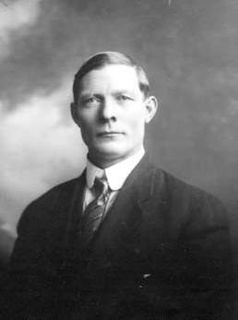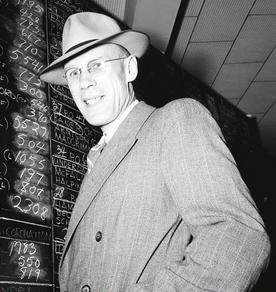The 1928 municipal election was held December 10, 1928 to elect a mayor and six aldermen to join Edmonton City Council and three trustees to join the public school board during the year of 1929 and 1930. Three trustees were elected by acclamation to join the separate school board for 1929 and 1930.

The Edmonton City Council is the governing body of the City of Edmonton, Alberta, Canada.
Contents
- Voter turnout
- Results
- Mayor
- Aldermen
- Public school trustees
- Separate (Catholic) school trustees
- Money Bylaws
- References
There were also six bylaws put to a citywide vote.
10 aldermen sat on city council at any one time. Four of the positions were already filled: Ralph Bellamy, A C Sloane, James East, and L S C Dineen were all elected to two-year terms in 1927 and were still in office. John C. Bowen had also been elected to a two-year term, but had resigned in order to run for mayor. Rice Sheppard (SS) was elected in the 1928 election to finish his term.

James East was a politician and labour activist in Alberta, Canada. He was for a time and the longest-serving alderman in Edmonton's history, and was a defeated candidate at the provincial and federal levels. He was also an ardent monetary reformer.
John Campbell Bowen was a clergyman, insurance broker and long serving politician. He served as an alderman in the City of Edmonton on the municipal level and then went on to serve as a member of the Legislative Assembly of Alberta from 1921 to 1926, sitting with the Liberal caucus in opposition. He also briefly led the provincial Liberal party in 1926.
Labour did well in this election, electing four new alderman (counting farmer activist Sheppard) to add to East and Dineen who were continue to serve in 1929. These six out of 11 seats would give Labour a majority position in 1929.
There were seven trustees on the public school board, but four of the positions were already filled: Frank Crang (SS), Arthur Cushing, Albert Ottewell (SS), and Elmer Roper had all been elected to two-year terms in 1927 and were still in office. The same was true on the separate board, where Robert Crossland (SS), Charles Gariepy, Thomas Magee, and B J Tansey (SS) were continuing.
Arthur Thompson Cushing was a politician in Alberta, Canada and a municipal councillor in Edmonton. His brother, William Henry Cushing, was a mayor of Calgary, while another brother, Alfred Cushing, served as alderman in that city.

Elmer Ernest Roper was a politician in Alberta, Canada. He served as leader of the Alberta Co-operative Commonwealth Federation, the mayor of Edmonton, and a member of the Legislative Assembly of Alberta. He was also a candidate for the House of Commons of Canada.
Charles Edward Gariepy was a Canadian politician. He was elected to the separate Catholic school board from 1929-1937. Gariepy was elected to be North side alderman, Edmonton City Council, Alberta, Canada 1940-1948.
This election marked Edmonton's return to the at-large block voting first past the post electoral system, under which each voter had as many votes as there were seats to fill and there were no wards to divide the city voters, after five elections of using single transferable vote/PR.
The single transferable vote (STV) is a voting system designed to achieve proportional representation through ranked voting in multi-seat organizations or constituencies. Under STV, an elector (voter) has a single vote that is initially allocated to their most preferred candidate. Votes are totalled and a quota derived. If their candidate achieves quota, he/she is elected and in some STV systems any surplus vote is transferred to other candidates in proportion to the voters' stated preferences. If more candidates than seats remain, the bottom candidate is eliminated with his/her votes being transferred to other candidates as determined by the voters' stated preferences. These elections and eliminations, and vote transfers if applicable, continue until there are only as many candidates as there are unfilled seats. The specific method of transferring votes varies in different systems.

